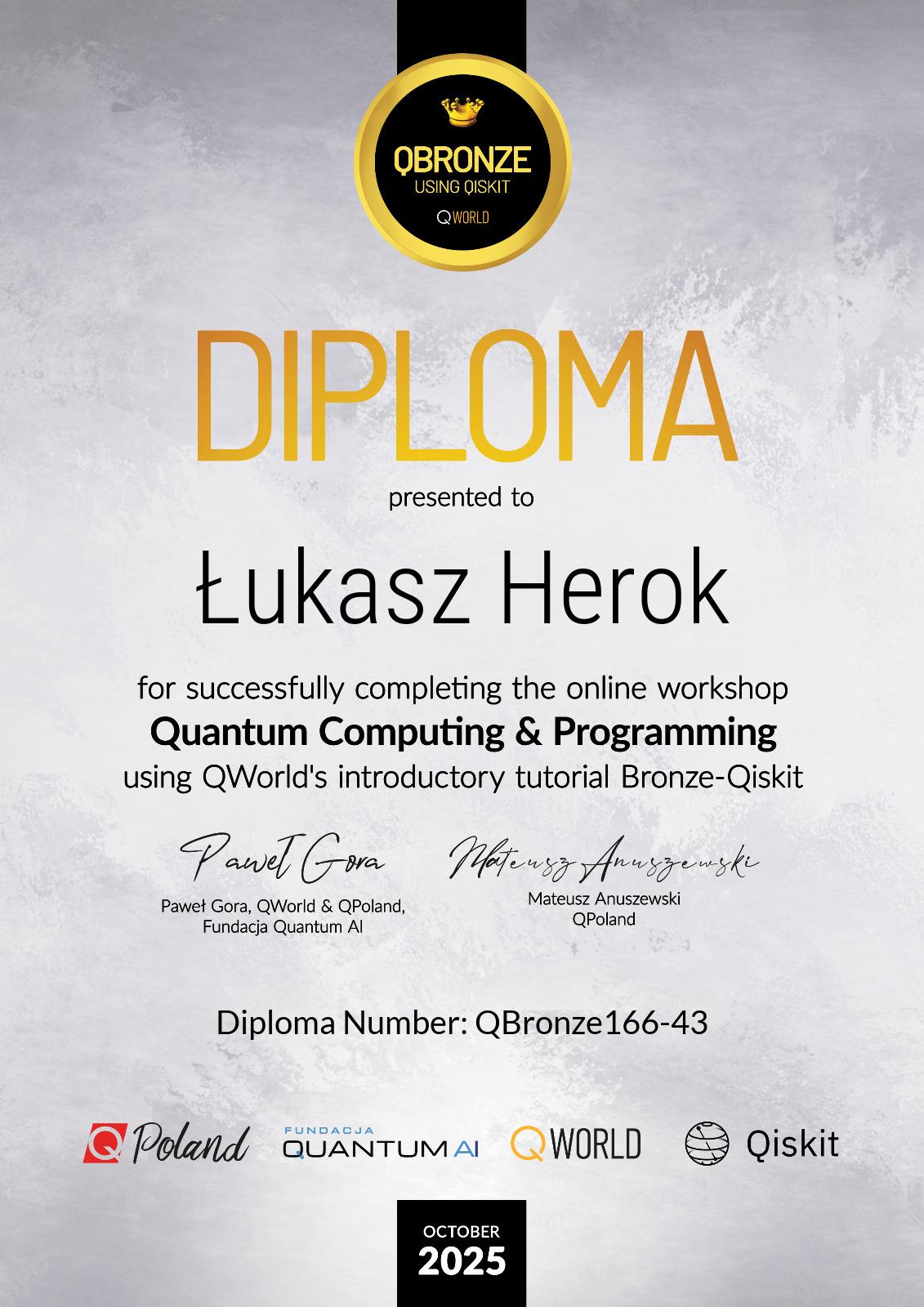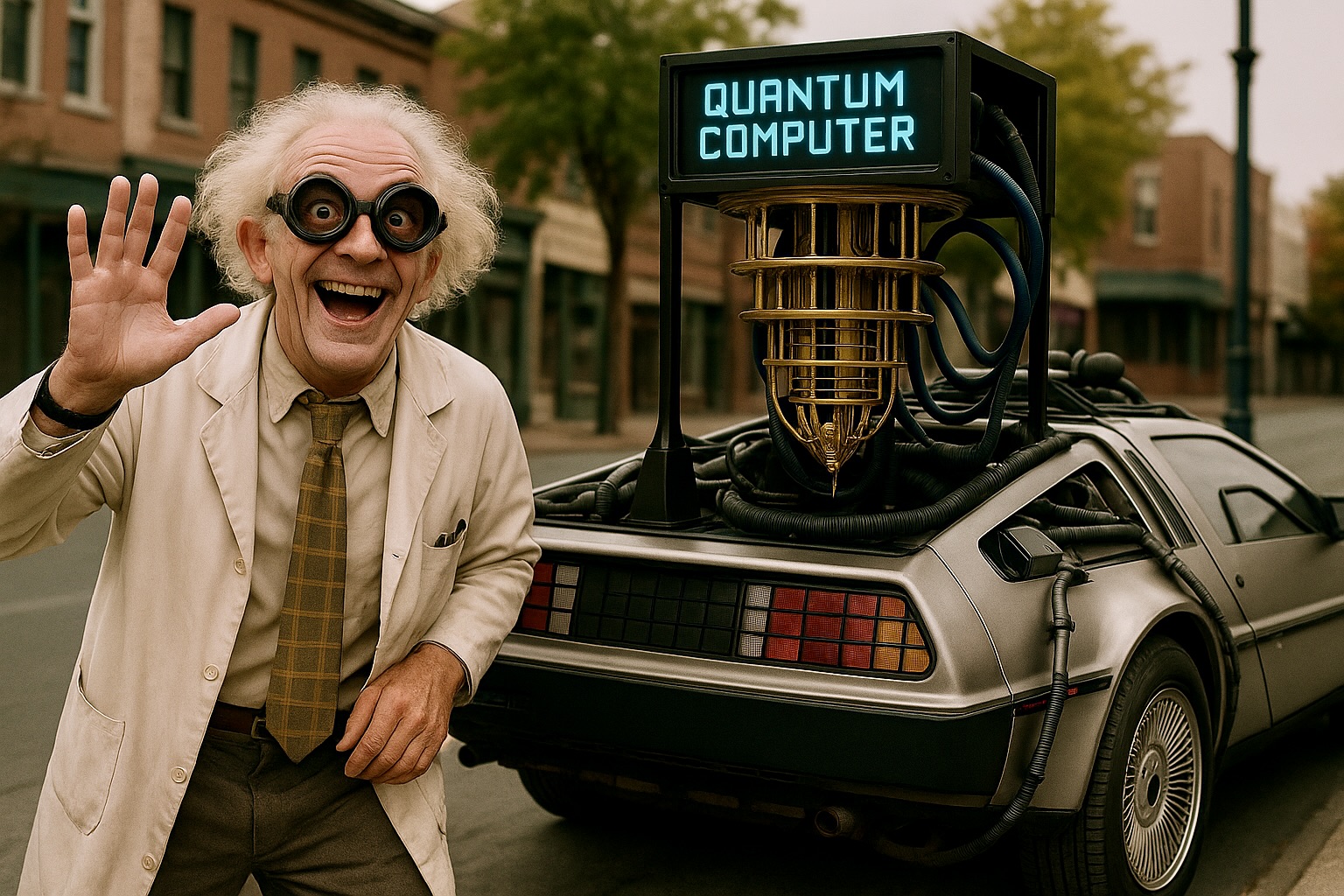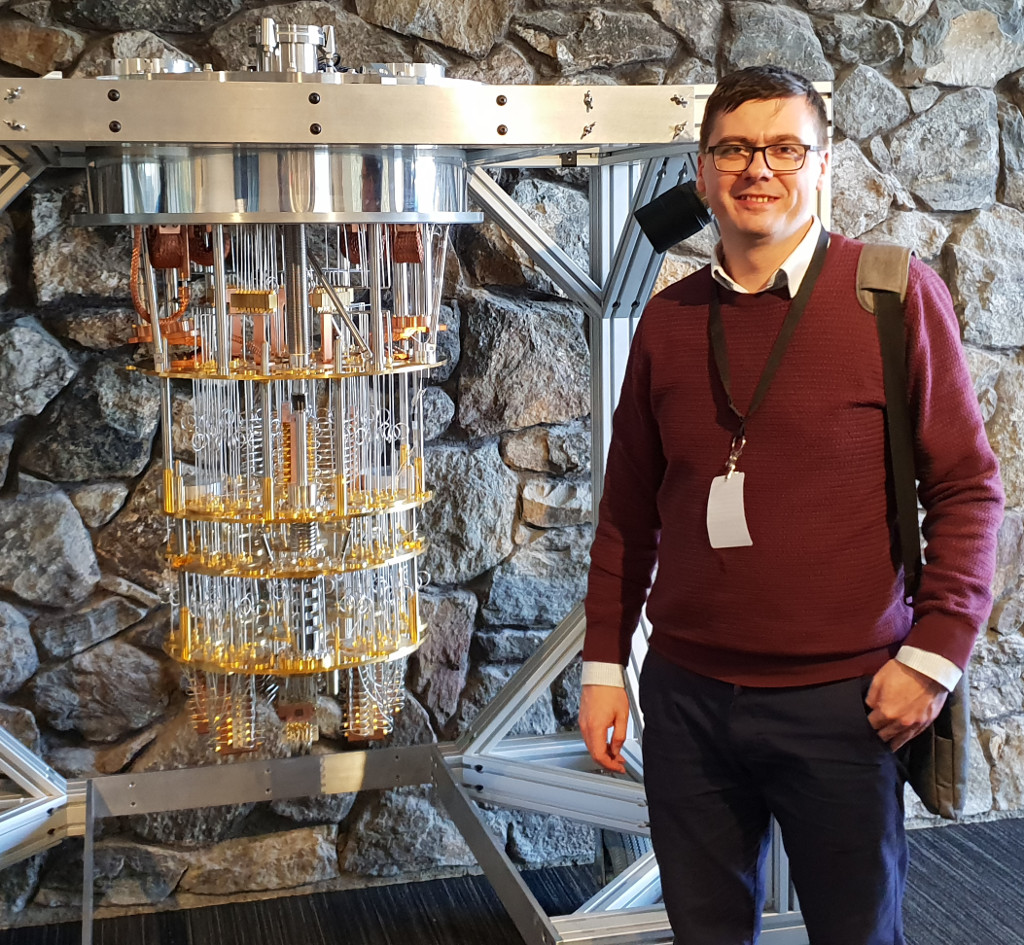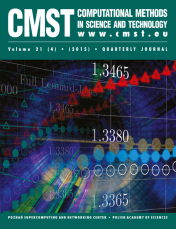




act directly on a single qubits. The question is how to extend the matrices to act on mulitqubit system that is represented by the column vector. This article gives short introduction into qubits and quantum gates, then it shows on the examples how to extends one and two qubit gates for multi qubit system using the matrix algebra. Read full text >>>
This article goes through "Qiskit Textbook Grover's algorithm" explaining it in more details, showing how to apply quantum Gates as the matrix calculus. Grover's algorithm is being described as a searching algorithm for the unstructured database. However, this example shows, how to perform the Groover's algorithm, to make a quantum system to reveal the marked states. Read full text >>>
On the 14th of September, I gave a speech at BBdays4 IT the IT conference for developers. During the presentation I was explaining the principles of how quantum computers work. Differences between bits and qubits. How quantum algorithms are implemented. After the theoretical introduction, I was showing real examples of how to effectively store bitstrings in qubits. Finally, I gave tips on how to start your quantum adventure in the place you live in.
This is to certify that Łukasz Herok successfully completed and received a passing grade in QTM3x: The Building Blocks of a Quantum Computer: Part 2 a course of study offered by DelftX, an online learning initiative of Delft University of Technology.
The main goal of the doctoral thesis was to examine in detail the thermodynamic properties of the superconducting state inducing in the selected compounds of the antiperovskite structure in the framework of the classical Eliashberg equations formalism. The secondary goal related to the conducted research was to initiate work on a new software, aimed at enabling future calculations basing on a generalized Eliashberg equations formalism, and omitting the need to determine the phenomenological μ* parameter. Ceremonial presentation of doctoral diplomas at the University doctoral dissertation
My new tutorial. The aim of this tutorial is to show you how quantum computers can store information encoded in a bit string using significantly fewer qubits than classical bits. It is possible thanks to the superposition effect. I will try to explain it through the example. Read full text >>>
Pariticipated in Qiskit 2019 Camp at IBM Thomas J. Watson Research Center in Yorktown Heights, NY USA. During the 24-hour hackathon in the Mountain Top Inn & Resort Killington, VT, we developed a FlappyQat game for learning quantum gates.

This is to certify that Łukasz Herok successfully completed and received a passing grade in QTM2x: The Building Blocks of a Quantum Computer: Part 1 a course of study offered by DelftX, an online learning initiative of Delft University of Technology through edX.
Artykuł ten dostarcza podstawowych informacji o komputerach kwantowych. Omawiane są podstawy fizyczne na który komputer kwantowy działa. Wskazywane są potencjalne pola zastosowań. Przedstawiono również wybrane cztery układy na bazie których budowane są kubity oraz pokrótce omówiono zasady ich działania. Read full text >>>
In order to perform larger scale physics research in the area of superconductivity, we have developed an application that can transform the Hubbard Hamiltonian into a matrix and diagonalize it to find the selected model’s energy spectrum. For that purpose we have used the Python language and its wide ecosystem. This paper proves that selected tools are capable of creating scientific applications in a general sense. After a short introduction into the physics problem and the designed algorithm we will present the computer science problems and their solutions in creating usual scientific programs, in particular: performance and parallelization issues, storage of input data and the results, bottlenecks detections, as well as optimization and testing. The most interesting examples of the developing cycle will be described to give a prepared solution for implementing the other scientific software. Read Volume 21 (4) 2015, 181-189

For the first time in the world, we succeeded in synthesizing the room-temperature superconductor (Tc ≥400 K, 127C) working at ambient pressure with a modified lead-apatite (LK-99) structure.
#qc
I developed the quantum program in Qiskit SDK, solving the famous Maximum Cut Problem for three nodes, using the Full Adder for counting edges for the oracle.
#qc
Implementing Grover's algorithm for two qubits - with and without ancilla qubit.
#qc
Presentation "Storing bitstrings in qubits" at BBdays4 IT, the IT conference for developers. Talking how quantum computers works., how quantum algorithms are implemented. Showing real examples of quantum programs.
#qc
According to Quantum Mechanic and No-cloning theorem perfect cloning is not possible. The key thing is superposition. Even if we know everything about the parts of the system, we don't have the full knowledge about the full system. We can simply visualize that with the simple math operation:
( (A + B)^2 = A^2 +2AB +B^2 )
is not the (A^2 + B^2). It is not enough to look only at the parts of the system and try to apply the same operation as on the full system.
#qc
Nice and complete art: 4-qubit Grover's algorithm implemented for the ibmqx5 architecture PHILIP STRÖMBERG
#qc
( e^{ipi} + 1 = 0),
and quick hints for qunatum gates (eg. T):
( e^{ipi} = -1)
( e^{ rac{ipi}{2}} = i)
( e^{ rac{ipi}{4}} = sqrt(i))
#qc
Pariticipated in Qiskit Camp at IBM Thomas J. Watson Research Center in Yorktown Heights, NY USA.
#qc
Working over the introduction to the bitstring encoding tutorial qubits_lh.
#qc
Invited to participate in the 2019 Qiskit Camp, produced by the Qiskit Community of IBM Research. https://qiskit.camp
#qc